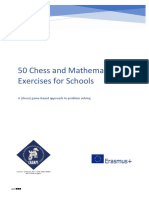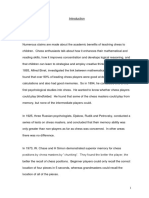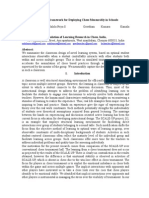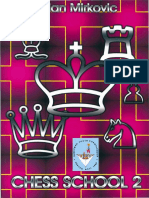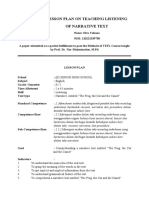0% found this document useful (0 votes)
27 views9 pagesChess and Problem Solving Involving Patterns
This document summarizes a study on the relationship between chess playing ability and problem solving skills involving patterns. The study involved 437 students from 3rd to 6th grade in Portugal. Students completed a test of geometric and numeric pattern problems and a survey about chess playing experience. The results showed a relationship between chess playing strength, as measured by ELO rating, and performance on pattern problems. Specifically, stronger chess players performed better at solving pattern problems. The study aimed to explore how chess playing relates to pattern recognition and problem solving skills in mathematics.
Uploaded by
Ryza Bernadette MuzonesCopyright
© © All Rights Reserved
We take content rights seriously. If you suspect this is your content, claim it here.
Available Formats
Download as PDF, TXT or read online on Scribd
0% found this document useful (0 votes)
27 views9 pagesChess and Problem Solving Involving Patterns
This document summarizes a study on the relationship between chess playing ability and problem solving skills involving patterns. The study involved 437 students from 3rd to 6th grade in Portugal. Students completed a test of geometric and numeric pattern problems and a survey about chess playing experience. The results showed a relationship between chess playing strength, as measured by ELO rating, and performance on pattern problems. Specifically, stronger chess players performed better at solving pattern problems. The study aimed to explore how chess playing relates to pattern recognition and problem solving skills in mathematics.
Uploaded by
Ryza Bernadette MuzonesCopyright
© © All Rights Reserved
We take content rights seriously. If you suspect this is your content, claim it here.
Available Formats
Download as PDF, TXT or read online on Scribd
/ 9












